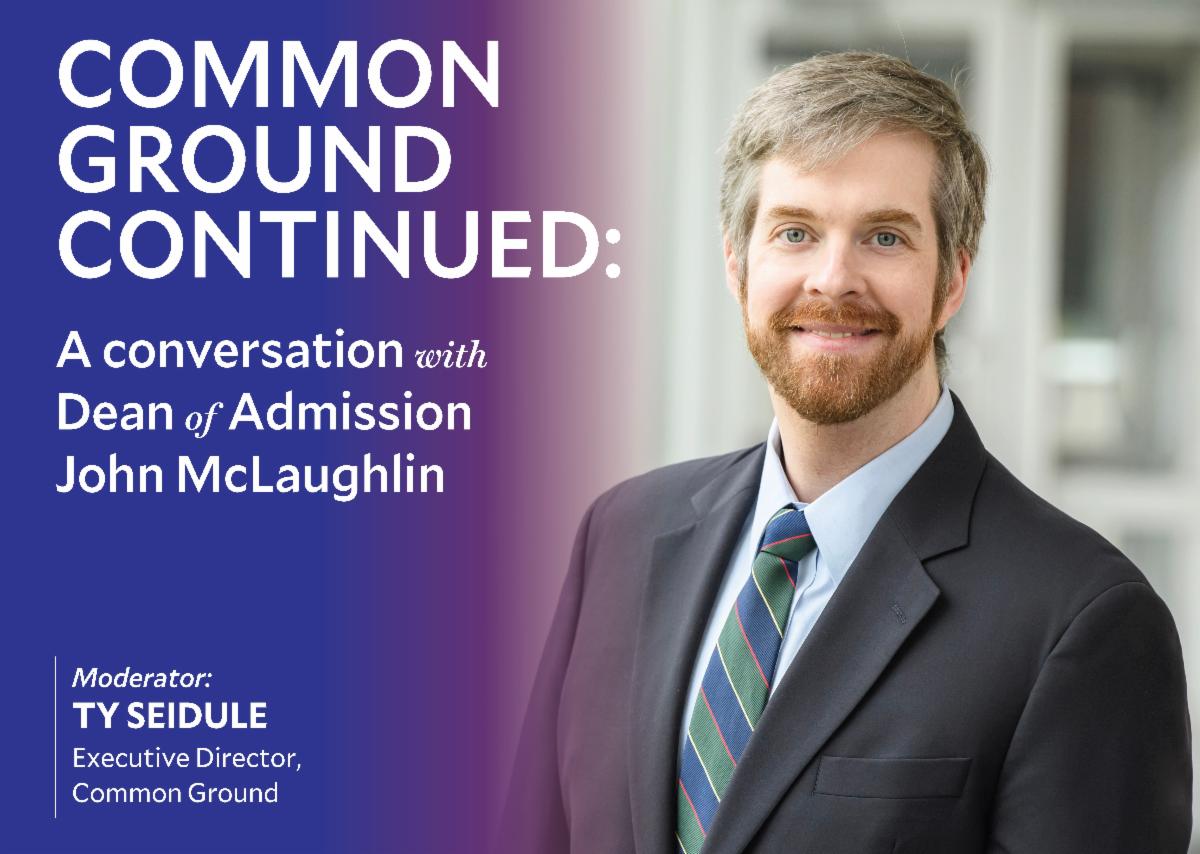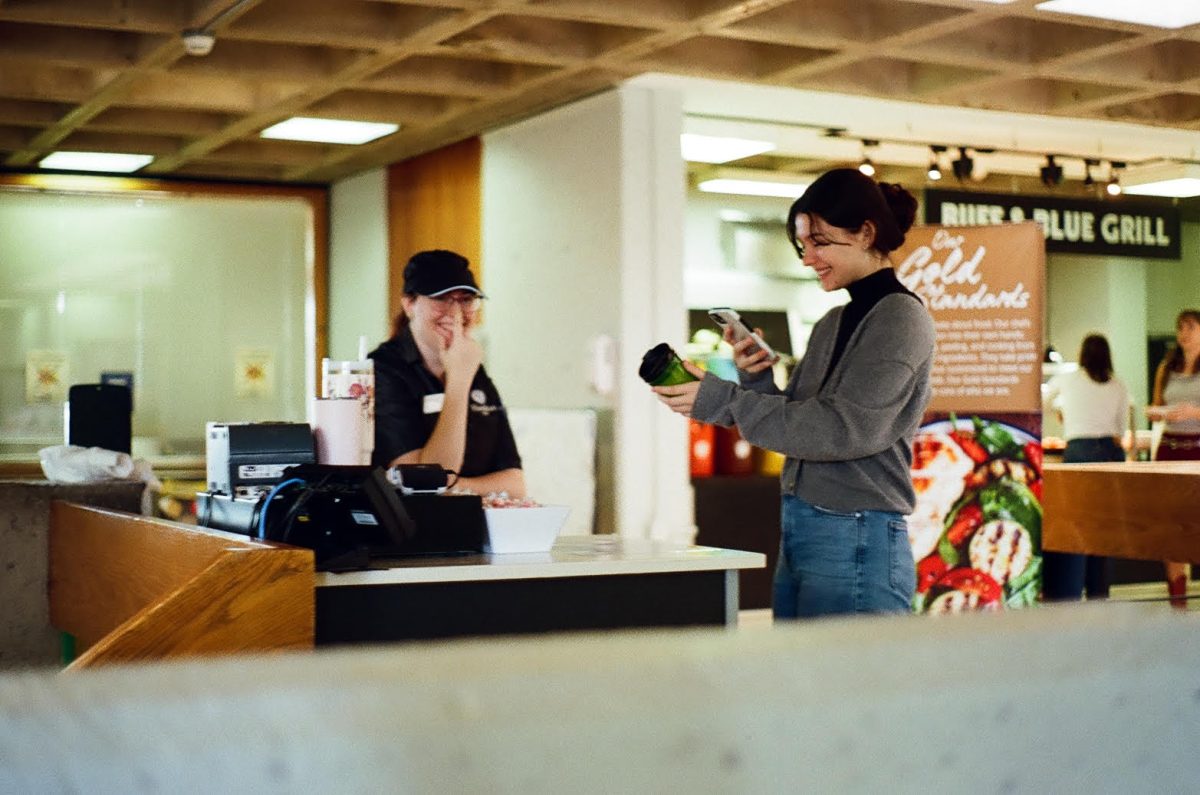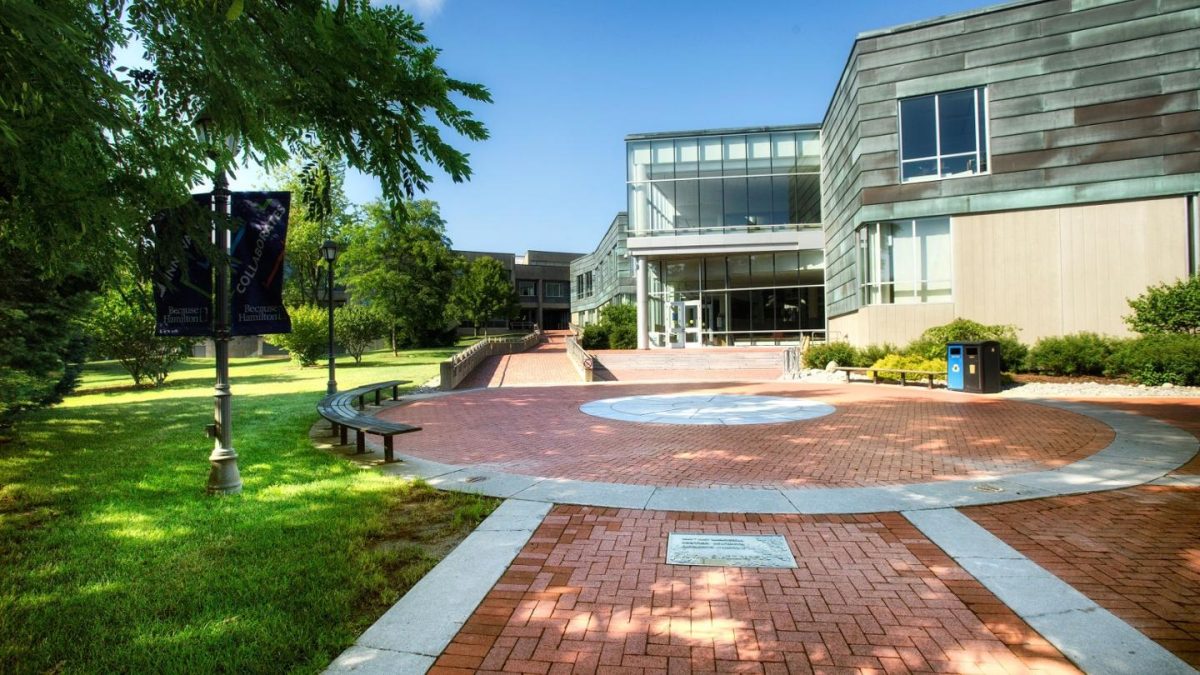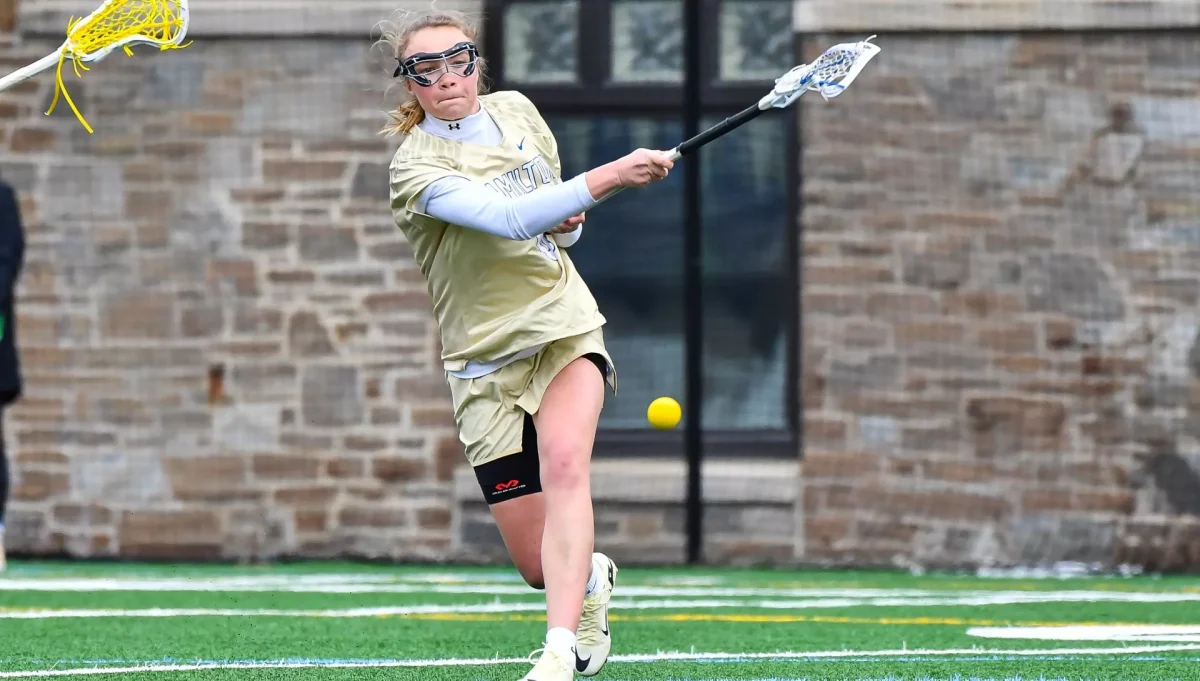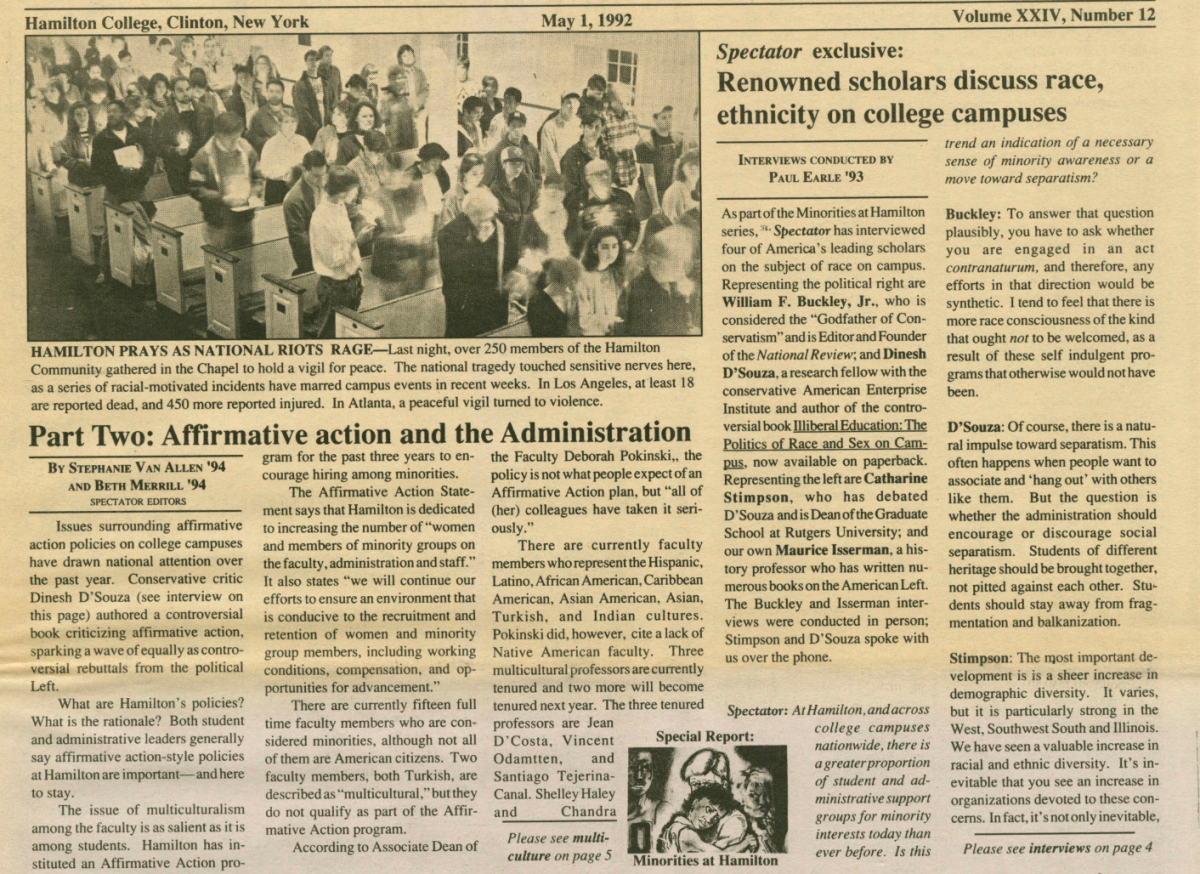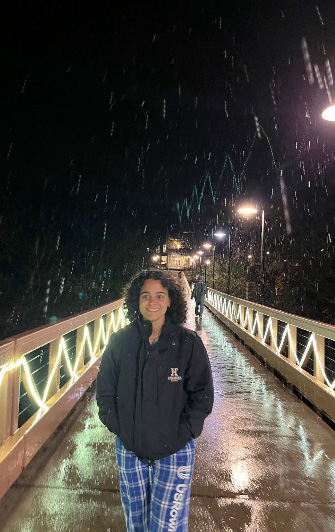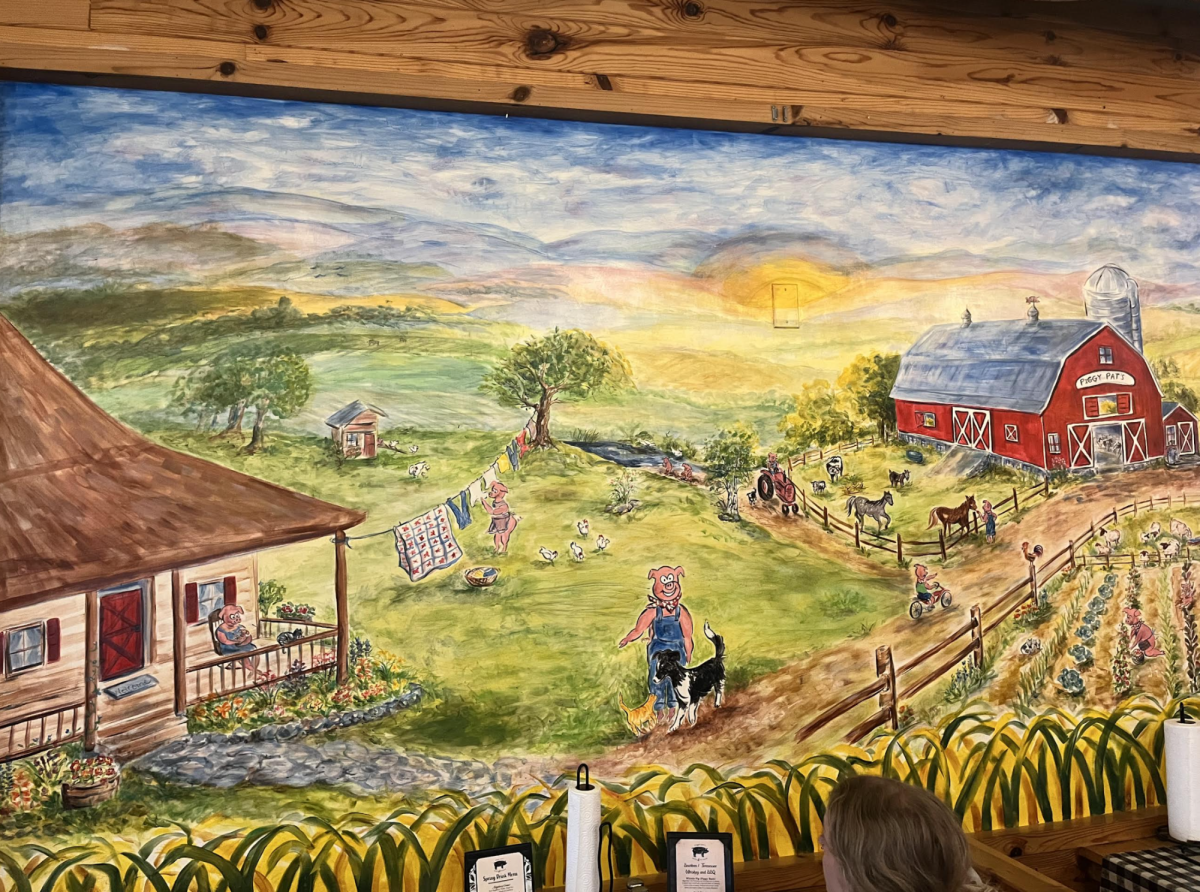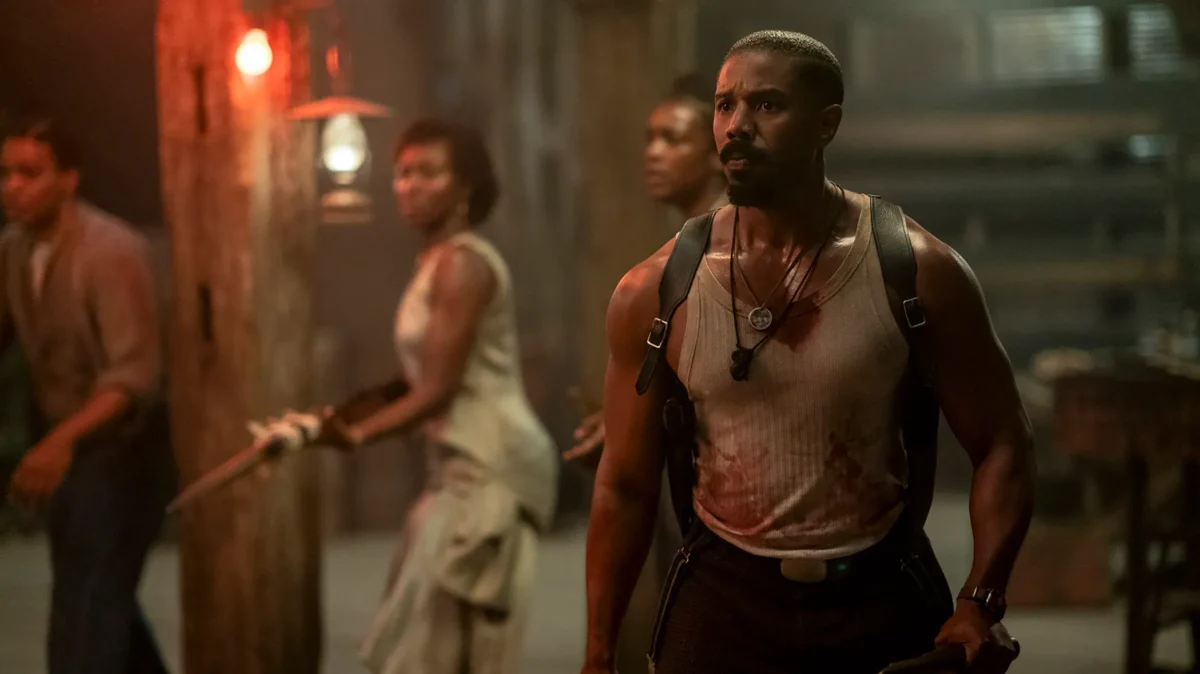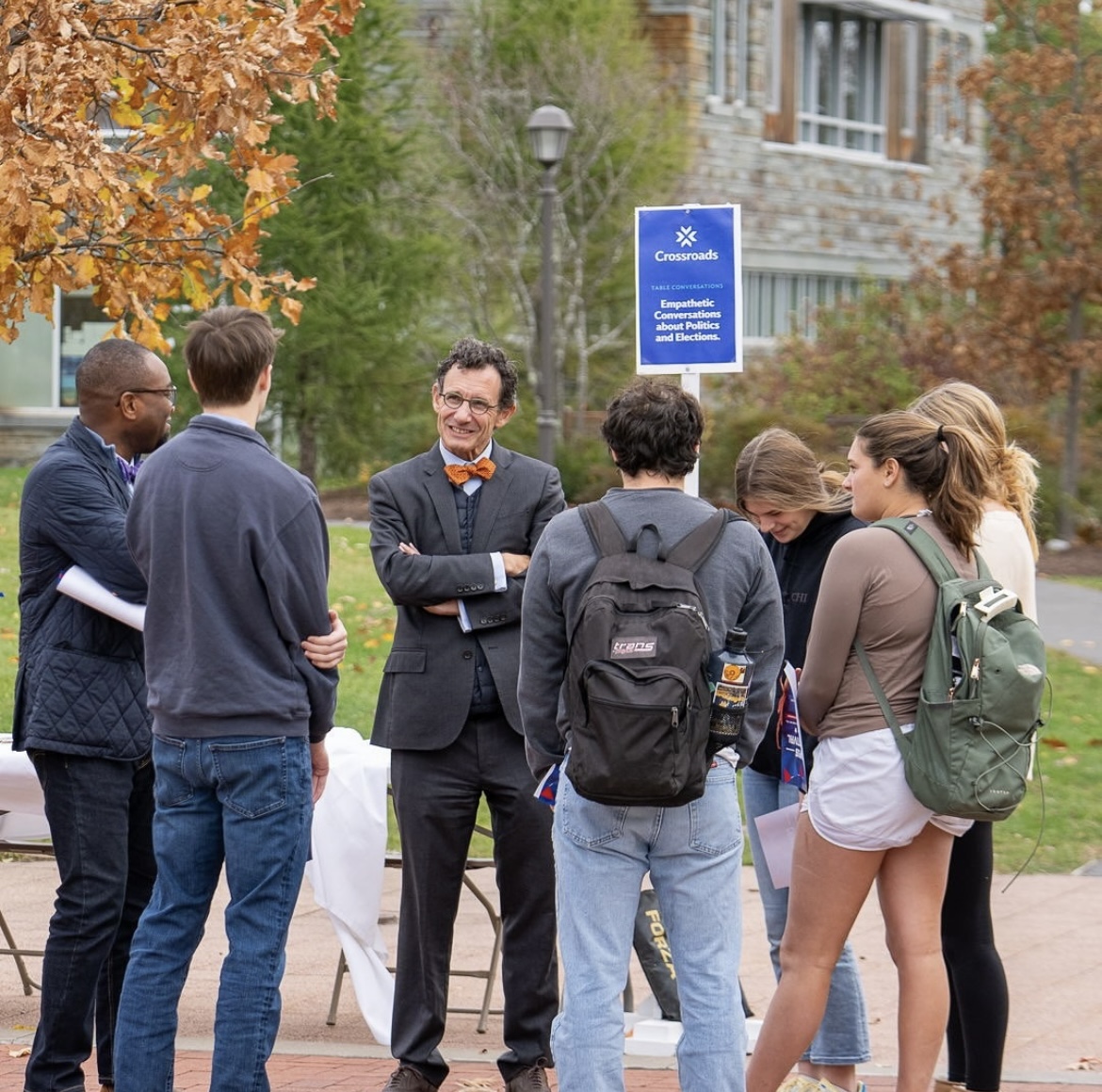
On Nov. 20, the Levitt Center’s Community Conversations Project held a Thanksgiving feast to provide tips on how to approach difficult conversations around the holiday table and give students a chance to practice these strategies for limiting conflict.
Whether it is a holiday party with distant relatives or a dinner table with immediate family, many face the same dilemma when heading home for the holidays: how to deal with differing opinions from relatives. This holiday season is the first time that many people are seeing their relatives following the results of this polarizing election season. Lecturer in Environmental Studies Alma Lowry led the discussion and stressed that tensions have the potential to be higher than normal, so it is important to equip oneself with conversation management strategies. These strategies include boundary setting, exit statements and ideas for exiting a conversation or getting breaks from family time.
Students and staff attending the chat contributed their own ideas for conflict-avoidance strategies. If someone is hosting a family gathering, the boundaries-setting approach of sending an email out beforehand to guests declaring that controversial opinions should be left out of conversation is especially helpful. Exit statements help cut off a conversation once it has begun, and those attending the feast agreed mentioning the importance of relationship preservation is a good strategy for exiting. While exit statements are things you can say to end a conversion, exit strategies plan for avoiding a direct cut-off. For example, students added a change in topic to the list of exit strategies as it can discreetly divert the conversation from controversial areas. If these interactions become too much, Lowry proposed taking short breaks. Students shared their methods for taking some time alone by going on walks or studying, but not all breaks need to be alone. Board games are another break strategy thought up by the table that still includes family but includes a distraction from outside debates.
The table then turned away from avoidance of controversial discussion and towards debate management where attendees discussed various tools for assessing whether or not to enter into a certain conversation. These tools included taking a second to assess if you can emotionally tolerate listening to viewpoints from the other side with respect and understanding, as well as visualizing a desirable outcome that you want to think can be reasonably gained from discussing that topic. If both of these tools are taken into consideration and an effective conversation looks possible, then sometimes debate is appropriate. A student also mentioned that other factors such as the age and background of the family member(s) should be considered as this may shape their emotional judgment on some areas of debate that could make the conversation ineffective on both sides.
To wrap up the feast, everyone came up with their own controversial opinion that they felt comfortable sharing with the person sitting next to them with the directions to simply state the opinion without explaining it. Although most of these controversial topics were light-hearted — for example, that trick or treating should not be allowed past the age of 13 — many still held strong opposition or agreement towards them. Once a person shared their statement with their partner, that partner asked questions to practice reaching the why behind a standpoint. As was demonstrated with this practice, many learned that they were initially stunned by their partner’s opinions but became less surprised when they found out the reasoning behind it. Lowry also shared that this simulation helps with reflective listening skills as everyone took time to understand, rather than disprove, their partner’s statement.
The Levitt Center’s Community Conversations Project educates students on how to lead discussions on sensitive or controversial areas of discussion by providing spaces for students to collaborate with other students and staff members in leading conversations. Students who want to be more involved with the project can apply to lead their own community conversations.

